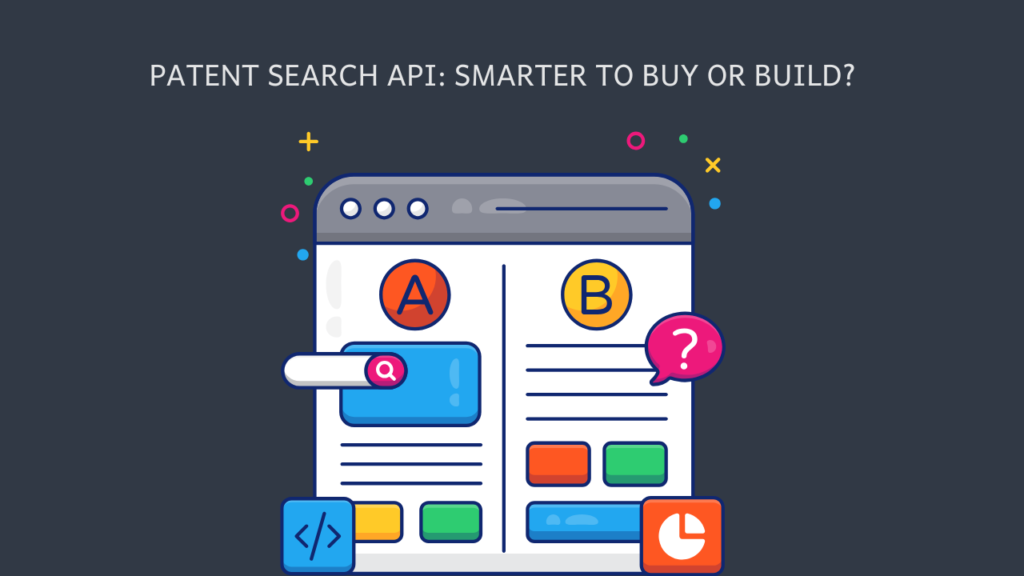
Patent Search API: Should You Build In-House or Buy Off-the-Shelf
Sooner or later, someone in the boardroom asks: Wouldn’t it be smarter to create our own patent search API instead of licensing one? On the
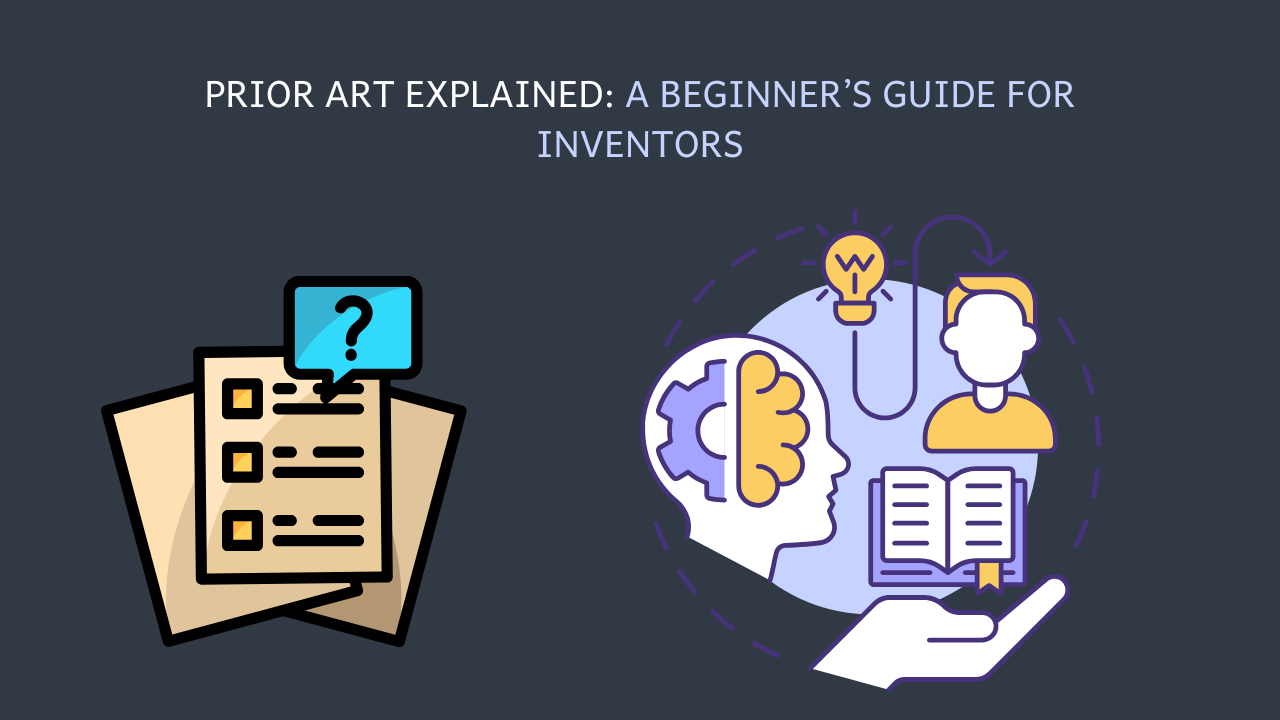
You’ve come up with an idea and you’re excited to see it protected. But soon the questions follow:
As an inventor, these questions can feel overwhelming. You hear terms like novelty, patentability search, and prior art search, but they often sound like legal puzzles instead of practical steps.
This guide is here to answer the most common questions inventors like you might have. Think of it as a quick and easy starting point. In plain language, we will explain what prior art is, why it matters, and how you can search for it, even on a limited budget.
By the end of this article, you’ll know the basics you need to take the next step with confidence.
Let’s set the scene. Say you came up with a breakthrough idea: a cot that can put babies to sleep using a particular vibration pattern and soothing music.
Many parents don’t get enough sleep when their babies don’t sleep well at night. With your invention, you are solving a problem that a lot of parents face. These parents would be interested in buying this cot and it can open up a significant revenue stream for you. And because you feel your invention is novel, you think that it would be a good idea to patent it.
However, there is a possibility that someone else has already come up with a similar invention and received a patent on it. That patent becomes a piece of prior art and it can prevent you from securing one for your own invention.
This is the essence of prior art. Now let’s dig into the technical definition.
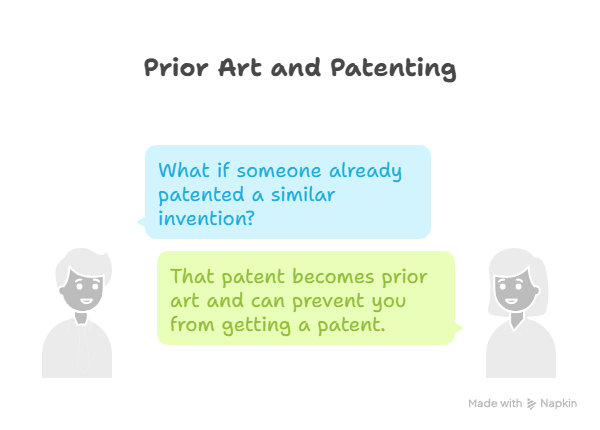
Prior art is any evidence that an invention is already in existence or publicly available prior to the patent application filing date. The invention does not need to be commercially available or exist physically to be prior art. It suffices that the invention has been previously described or shown to be something that contains the use of technology like your invention.
So, if you file a patent without searching for prior art and the patent examiner finds that your invention is not novel (new), you receive a “§102 rejection,” which means the invention is not new.
There is one more common reason for rejection: a “§103 rejection,” which means your invention is considered an obvious improvement over existing prior art.
The §102 and §103 constitute 2/3rd of the total rejections. In other words, most rejections happen either because examiners found a prior art that questions novelty, or because they combined existing references to show that the invention is obvious.
Inventors must invest in a thorough search of past and present products and patents before they conclude on the novelty and non-obviousness of their invention.
That’s why a prior art search should be your first step, because it can save you time, money, and the disappointment of a rejection.
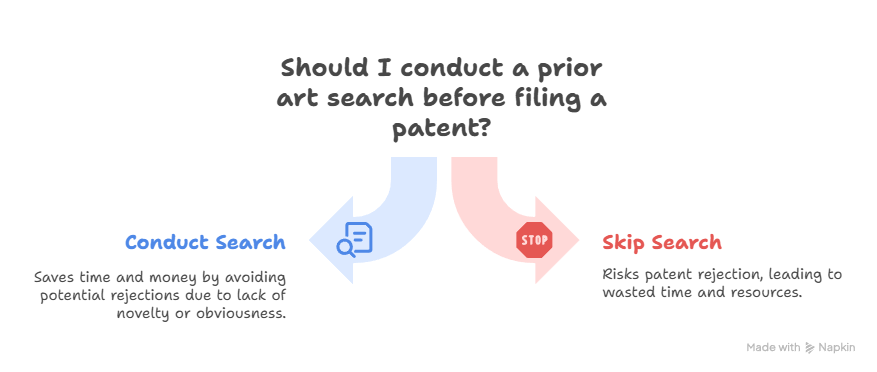
Inventors often wonder what exactly qualifies as prior art. The rule of thumb is simple: anything publicly disclosed before your patent filing date can be used against you. It doesn’t matter if it’s in another language or from the other side of the world; if it’s public, it counts.
Prior art can include:
The most obvious form is an existing patent or product. But here’s the catch: not all inventions make it to market. Some remain buried in academic papers, research reports, or even obscure patent filings. Yet these records still count as prior art, and they can block your patent application.
Not everything you come across can be used to reject a patent. There are clear exclusions:
For instance, suppose you file a patent application in January 2024. If a research paper on a similar invention is published in March 2024, that publication does not count as prior art against your application because it came after your filing date.
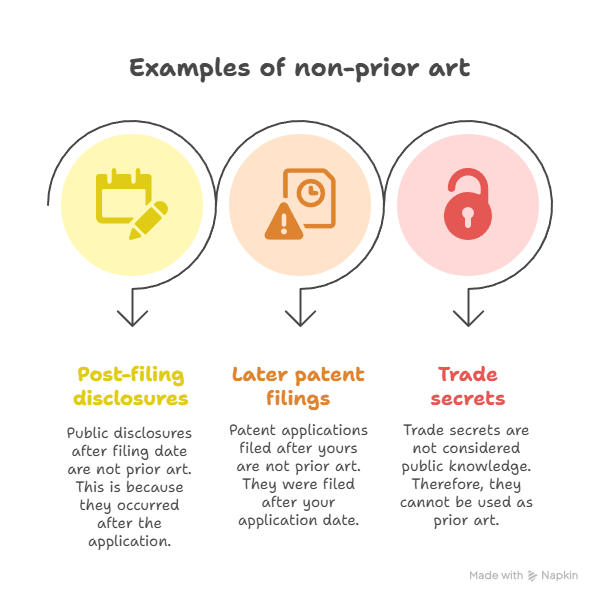
In short, prior art must predate your filing and be accessible to the public. If it’s secret or comes later, it won’t block your patent.
However, the system today is not what it was. This change was brought by the American Invents Act. Let’s look at it in detail.
The America Invents Act (AIA) introduced a major shift in U.S. patent law, when it was implemented in March 16, 2013. The most impactful change was moving from a “first to invent” system to a “first inventor to file” system. This directly affects what qualifies as prior art.
Pre-AIA Sections 102(a) and 102(e): Patents were granted under the “first to invent” system. An inventor was not entitled to a patent if the claimed invention was already patented, described in a patent, or in public use by another before the claimed invention.
Example: Under old law, an inventor could rely on lab notebooks or other proof of the invention date to win priority over another inventor who filed first.
AIA Section 102(a): Today, a patent is blocked if the claimed invention was described in a patent or patent application filed before the effective filing date of your invention.
Example: Under the AIA, the USPTO awards the patent to the inventor with the earliest effective filing date, regardless of who conceived it first.
Pre-AIA Section 103: Prevents patenting of an invention if it would have been evident at the time the claimed invention was made.
AIA Section 103: A patent may not be obtained if the invention had been obvious before the effective filing date of the claimed invention.
For example, if one prior-art reference teaches encryption and another teaches sending email, then sending an encrypted email would not be novel. It would be ‘obvious’ because there is a motivation to send emails in a form that would allow them to be read only by the intended recipient.
A few years ago, if you asked, “How do I run a prior art search myself?” the answer would have been intimidating. You’d be told to master Boolean search strings, juggle multiple free databases, and scan through thousands of technical documents. It was complicated, time-consuming, and easy to miss something important.
Today, things look very different. With the rise of AI and natural language search, prior art searching has become much more accessible, even for inventors without a background in intellectual property.
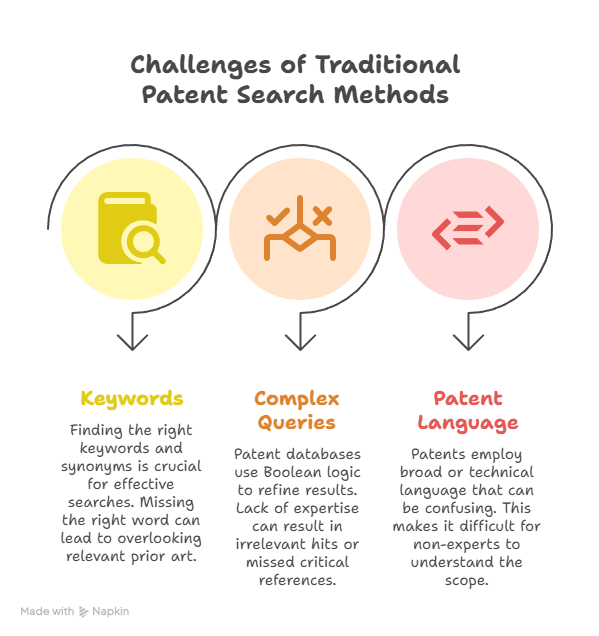
Before AI tools, inventors faced three major hurdles:
On top of that, companies sometimes disguise their IP activity with abstract wording, making searches even harder. So how do you find prior art easily?
Thankfully, AI has lowered the barrier. Instead of wrestling with keywords and Boolean logic, you can type in your idea in plain English. AI systems understand context, map synonyms, and highlight relevant prior art with far less effort.
One of the most useful tools here is PQAI. It allows inventors to run natural language searches and see claim-level matches to their idea. You don’t need professional search skills, nor a big budget, to find whether your invention is truly novel.
All you need is to type your invention in simple terms. Let me show you how.
Hiring a professional agency or freelancer for a prior art search can easily cost you anywhere from 800 to 3000 USD. You might spend thousands only to discover that your idea wasn’t patentable in the first place.
For individual inventors and early-stage startups, that’s a serious roadblock. Most either take the risk of filing without a search (and risk rejection later), or skip filing altogether.
This is where PQAI (Patent Quality Artificial Intelligence) changes the game. Instead of burning through budget, you can run an AI-powered prior art search for free.
PQAI system uses semantic searching, so you can type your idea in plain English, and PQAI will return patents and non-patent literature that actually matches the concept of your invention.
Here’s how to conduct a search using PQAI:
#1. Go to search.projectpq.ai. You’ll see a clean search bar where you can enter your invention in your own words.
#2. Next, enter your invention idea. For example: A machine learning system that sorts waste based on images captured by a camera in the past, and hit Search.

#3. Review the results. PQAI will return relevant prior art documents. These could be patents or non-patent literature, ranked for relevance.
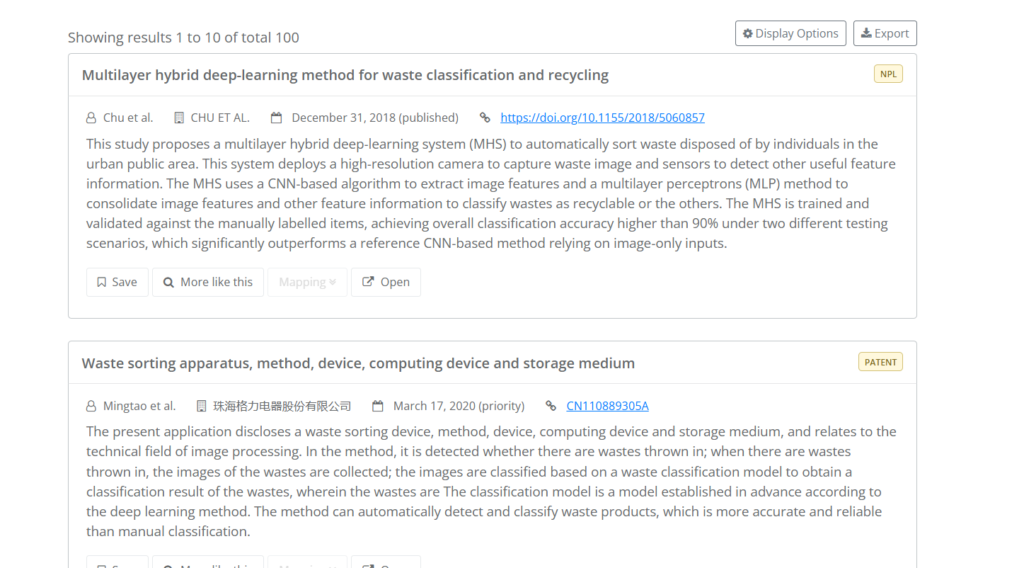
#4. Use the Mapping feature: Next to each result, there is an option to view the mapping which shows parts of your invention match which parts of the prior art description. This lets you judge relevance without reading the entire document.
#5. You can also click on more like this to get similar patent and non patent literature.
Not just that, you can view the patent or NPL upon clicking the hyperlinked text. You can also save the results for later reference and even export them as a PDF.
If you find prior art that is too close to your invention, you can adjust your idea before investing in filing. If you don’t, you may move forward with more confidence.
Patents are more than legal paperwork. They are milestones in the story of human progress. Every great idea rests on the foundation of what came before. That is why searching prior art is not just a formality. It is how inventors connect their work to the larger arc of innovation.
Traditional tools like Google Patents or subscription databases provide access, but they can be overwhelming and often require expertise to navigate effectively. PQAI changes that by putting advanced, semantic search in the hands of anyone with an idea. You can describe your invention in plain English, and instantly explore the landscape of patents and research connected to it.
So before you invest months of effort and thousands of dollars into an application, take the smarter first step. Validate your idea. With PQAI, you are not only reducing risk. You are claiming your place in the long chain of invention, where every search brings you closer to turning possibility into progress.
Try PQAI today and see how quickly your idea connects with the future.
At PQAI, we bring clarity to the world of patents. Through storytelling and insight, we simplify inventions so innovators, researchers, and businesses can learn from the past and build the future.
Share

Sooner or later, someone in the boardroom asks: Wouldn’t it be smarter to create our own patent search API instead of licensing one? On the
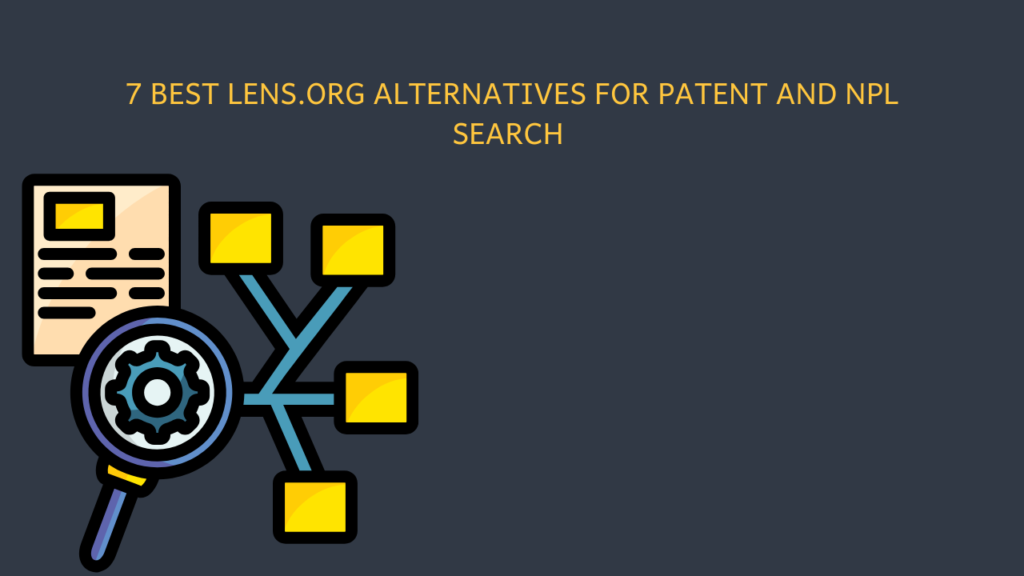
Among open platforms for patent and scholarly search, Lens.org has become a familiar name. With access to both patent and non-patent literature, it has positioned
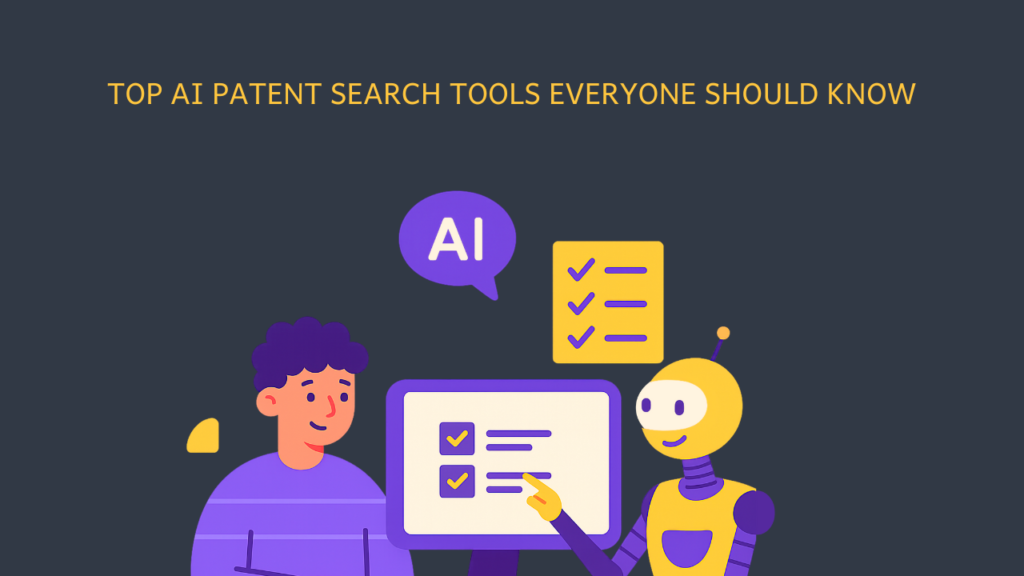
Imagine this: you design a smart blender that measures nutrition as you add ingredients. Excited, you type “nutrition tracking blender” into a patent search engine
Dear PQAI Team,
We are pleased to express our support for PQAI and its mission to revolutionize patent searching through open-source, AI-driven solutions.
At [COMPANY NAME], we recognize the importance of accessible and efficient patent tools in fostering innovation and empowering inventors from diverse backgrounds. By supporting PQAI, we aim to contribute to the development of transparent, collaborative, and impactful solutions for the intellectual property community.
We kindly request the addition of [COMPANY NAME] to the official List of Supporters of PQAI.
Sincerely,
[CEO or Equivalent Name]
[Title]
[Company Name]
[Signature]